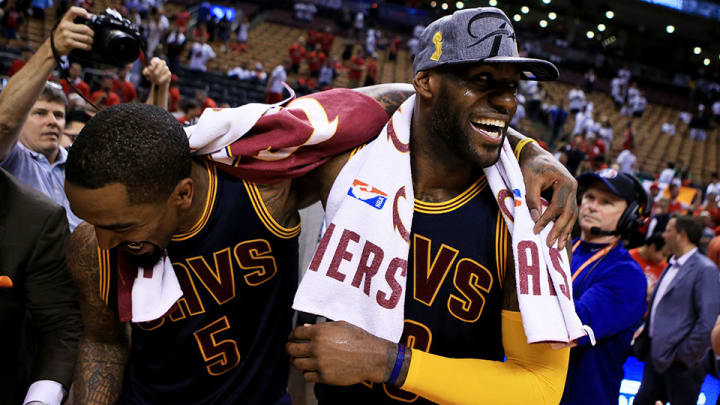Data Dimes: 2016 NBA playoffs are the most lopsided in league history

Your teams on the go or at home. Personalize SI with our new App. Install on iOS or Android.
For the fans who’ve followed along throughout the 2016 NBA postseason, maybe you’ve had an inkling that these games haven’t been nearly as competitive as in years past.
“Am I crazy, or are these matchups really lopsided?”
“Have there been more blowouts this year?”
“Well, this game is over. Turn on ‘Game of Thrones.’”
It turns out, no, you’re not crazy for thinking that. According to a data analysis from PointAfter, a Graphiq site, the 2016 NBA playoffs have featured the starkest margin of victory in league history (dating back to 1983–84, when the playoffs expanded to eight teams per conference).
Average Margin of Victory in NBA Playoffs Over Time | PointAfter
More from PointAfter (Graphiq network): All-Time Rosters for Every NBA Franchise | Re-Picking the 1996 NBA Draft | Ranking the Best MVP Seasons in NBA History
Heading into the NBA Finals—a rematch of last year’s showdown between the Golden State Warriors and Cleveland Cavaliers—victorious teams have won their playoff games by an average of 14.2 points.*
*It’s worth noting the Finals between the Dubs and Cavs still have to be played for a true apples-to-apples comparison, but it’s fair to say these playoffs have not felt as competitive for a reason.
J.R. Smith vs. Klay Thompson: The battle within an epic NBA Finals
The next-closest season by that measure is 1995–96, when teams boasted an average margin of victory of 12.8 points. Interestingly, that was the same year the Chicago Bulls set a then-regular season record by going 72–10 and led the way from a point differential standpoint throughout the postseason en route to the title. They propped up the playoff margin of victory by clobbering the Miami Heat in a three-game sweep in Round 1, collecting victories by 17, 31 and 21 points, respectively.
This time around, the Warriors are the record-setting team, having gone 73–9 during the regular season. But while you may think the defending champs boast the best margin of victory in the postseason this year, Stephen Curry and Co. actually rank third.
Playoff Point Differentials by Team (2016) | PointAfter
Cleveland’s point differential of 12.6 points leads the charge heading to the season’s final duel. The Cavs beat up on the Eastern Conference to the tune of two sweeps and a six-game series win over the Toronto Raptors, which featured a number of blowouts in Cleveland’s favor. The Raptors lost Games 5 and 6 by a combined 64 points.
And that brings us to the next data point: blowouts.
• MORE NBA: Curry's improbable magic | Irving's second shot at Finals
Logically speaking, there would need to be an inordinate amount of lopsided wins to stilt up a historically high margin of victory for the playoffs. No surprise, that logic checks out.
PointAfter opted to define a “blowout” in this context as a win by 20 points or more. With that qualifier, the 2016 playoffs remain the leader, and it’s not particularly close.
The 2016 NBA Playoffs Have Experienced More Blowouts Than Any Year Since 1984 | PointAfter
The first round of the playoffs didn’t expand to the best-of-seven format until 2003, as it was previously a best of five. So the potential for more blowouts from that point forward is certainly valid. However, with 22 games decided by a 20-point margin or more, the 2016 playoffs have easily seen the most askew box scores. And while we shouldn’t expect them moving forward, there’s still time for either the Cavaliers or Warriors to tack on to that total.
The sheer amount of blowout victories coupled with a league-high margin of victory across the postseason as a whole is undeniable. The 2016 playoffs, at least in terms of close, competitive games, haven’t been as compelling as seasons past.
If the NBA community gets treated to a closely-contested, back-and-forth battle in this year’s NBA Finals, perhaps this year’s postseason will end up being viewed slightly more favorably. Until then, you’re correct in thinking that there’s been a distinct lack of parity this year. The juggernauts at the top of the standings have shown little to no mercy.
